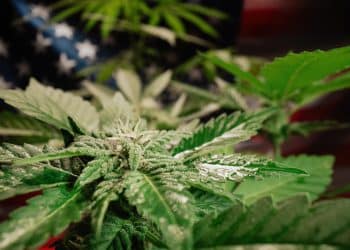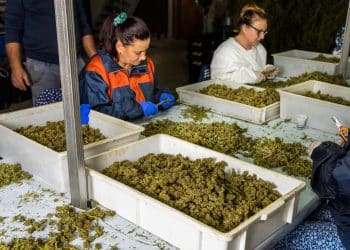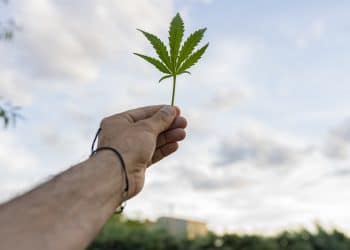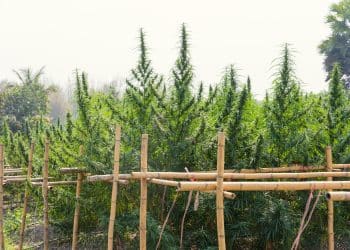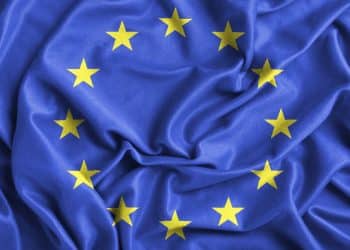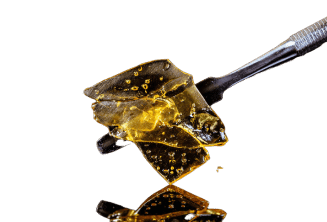Terpene vapor pressure is a critical characteristic influencing how these aromatic compounds behave in various environments, from natural ecosystems to industrial applications. Understanding the volatility of terpenes allows for better utilization in fields like perfumery, flavoring, and even pest control. This post delves into the nuances of terpene vapor pressure, shedding light on its significance and the factors that affect it.
The Evolving Landscape of Cannabis
The cannabis industry is undeniably on the rise, with mushrooms sprouting and cannabis becoming a household name. Millions of people are now proudly brandishing their medical cannabis cards, experiencing a potential revitalization in their lives through the use of Cannabis sativa. This phenomenon isn’t confined to any single nation; cannabis is globalizing, and people across the world are mobilizing to explore its myriad possibilities. However, with the increasing acceptance of cannabis, it’s only natural that opposing technological advancements will emerge, seeking to recapture revenue once generated from the incarceration of individuals for cannabis-related offenses.
Debunking “Stoned” Driving Stereotypes
The issue of “stoned” driving has garnered significant attention and debate. Various studies have explored the effects of driving under the influence of cannabis. The University of Toronto conducted a study in 1999, and the United States Department of Transportation followed suit in 1993. Interestingly, the latter study concluded that, of all the psychotropic drugs, licit and illicit, available to people who subsequently drive, cannabis might be among the least harmful. A 2019 study conducted at Kansas State University arrived at a similar conclusion. These findings challenge the prevailing narrative portrayed in mass media, highlighting the polarizing nature of research on the subject.
The Challenge of Gathering Public Opinion
Surveys and polls often shape public opinion on the matter. One press release, for instance, claimed that “Americans Overwhelmingly Support Marijuana Roadside Sobriety Test,” citing that 77% of Americans want policymakers to address the dangers of marijuana impairment. However, upon closer examination, the sample size (denoted as “n”) was revealed to be just 835 out of the 327,200,000 people in the United States, representing a mere 0.00026% of the population. This raises questions about the accuracy and representation of such surveys.
Examining Other Impairment Factors
The focus on cannabis impairment should not overshadow concerns related to other substances. A 2017 study revealed that nearly 20% of 7,405 drivers had consumed medications that could impair their ability to drive safely. This highlights the need for research and rapid testing methods to identify impairment caused by a range of substances, including legally prescribed pharmaceuticals.
The Science of Breathalyzers and Cannabinoids
For law enforcement to effectively tackle cannabis-related impairment, they require breathalyzer technology that can accurately measure the presence of cannabinoids. However, unlike ethanol, the molecules in cannabis, such as delta-9-tetrahydrocannabinol (THC), do not readily promote themselves into a vapor state for measurement. Researchers at the National Institute of Standards and Technology (NIST) embarked on a project to evaluate the vapor pressures of THC and cannabidiol (CBD) at various temperatures, as vapor pressure determines the likelihood of a substance generating a vapor under specific environmental conditions.
The Role of Vapor Pressure
Vapor pressure plays a critical role in the measurement of substances. Highly volatile substances have high vapor pressures at ambient conditions, making them easier to measure with breathalyzer technology. Terpenes, for example, are volatile, contributing to their aromatic properties. A study measured the vapor pressures of terpene vapor pressure and terpenoids, revealing a range from 1 to 550 Pa, with terpenes being more volatile than terpenoids. In contrast, medications like Clonazepam, a drug that can cause drowsiness, fatigue, and dizziness, have shallow vapor pressures at 25°C/77°F.
THC Vapor Pressure Challenges
While the NIST research didn’t measure the vapor pressures of THC or CBD at 25°C/77°F, their predicted values were shallow. THC’s predicted vapor pressures ranged from 0.0000257 Pa at 25°C to 0.0000487 Pa at 30°C. CBD’s predicted vapor pressures were even lower, with some discrepancies in the values discussed. These low vapor pressures present significant challenges in creating breathalyzer technology for cannabis, as the molecules are far less likely to vaporize at typical ambient conditions.
Terpene Vapor Pressure Take the Lead
When it comes to the ability to measure substances in livable conditions, terpenes outshine cannabinoids. Their relatively high vapor pressures make them more amenable to breathalyzer technology. This highlights the complex scientific and technical challenges involved in accurately measuring cannabinoid impairment for law enforcement purposes.
Key Cannabis Terpenes and Their Vapor Pressures
Cannabis contains many compounds, including terpenes. Three key terpenes are myrcene, limonene, and pinene. Each has a unique vapor pressure that affects its behavior when heated. Myrcene is known for its earthy and musky notes. It has a relatively high vapor pressure, which means it turns into vapor at lower temperatures. This makes myrcene one of the first terpenes to be released when cannabis is heated.
Limonene, with its citrusy aroma, also has significant vapor pressure. Its presence can be detected early during heating due to its volatility. Pinene smells like pine trees and requires more heat to volatilize because of lower vapor pressure compared to myrcene and limonene. Vapor pressures directly correlate with how quickly a terpene will evaporate or become part of the air around us. A higher vapor pressure indicates that less heat is needed for a terpene vapor pressure to release from cannabis flowers into the air or smoke.
Understanding these properties helps in optimizing extraction processes and improving user experience by targeting specific temperature ranges for desired effects. For example, users seeking relaxation might look for products rich in myrcenes that require minimal heating before their beneficial effects are felt through inhalation. The influence of these factors extends beyond just consumption methods but also impacts storage recommendations as well as product formulations where maintaining terpenerich profiles is crucial for quality assurance purposes.
 Terpenes and Cannabinoids Working Together
Terpenes and Cannabinoids Working Together
The entourage effect is a concept where terpenes and cannabinoids in cannabis work together. This synergy enhances the plant’s overall therapeutic benefits. Different combinations can produce unique effects that are not possible when these compounds are used separately.
One example is myrcene, a terpene with a low vapor pressure known for its soothing properties. When combined with THC, the main psychoactive cannabinoid, it may intensify feelings of relaxation. Conversely, limonene has uplifting effects. Paired with CBD, it could potentially aid in reducing anxiety without causing drowsiness.
-
Myrcene + THC = Enhanced relaxation.
-
Limonene + CBD = Reduced anxiety without sleepiness.
These interactions suggest that specific cannabinoid-terpene pairs could be tailored for particular conditions or desired outcomes. Thus, understanding the entourage effect could lead to more effective medical cannabis treatments.
Research into this phenomenon continues to grow as scientists seek to unlock new therapeutic applications. Through careful study of how various terpene vapor pressures influence cannabinoid action, more personalized medicine becomes available.
This knowledge also opens doors for improved product development within legal cannabis markets. Producers might use precise formulations to ensure consistent user experiences and targeted health benefits.
Preserving Terpene Integrity for Optimal Cannabis Experience
Storage conditions are crucial for maintaining the terpene profiles of cannabis. These volatile compounds can quickly degrade if exposed to unfavorable environments. To preserve terpenes, it’s essential to keep cannabis in a cool, dark place. Excessive heat or light can cause evaporation and degradation of these delicate molecules. Humidity levels also play a role; too much moisture can lead to mold, while too little may dry out the terpenes.
For those wanting to maintain full spectrum benefits, choosing the right extraction method is key. Some processes use high temperatures that can destroy terpenes. Others might introduce solvents that alter their composition. Techniques like CO2 extraction tend to protect terpene integrity better than others.
Enhancing Cannabis Aroma and Flavor Through Terpenes
Terpenes play a crucial role in creating the unique scents and tastes of different cannabis strains. These organic compounds are responsible for the rich variety of aromas found in nature, from the sharp scent of pine to the sweet fragrance of citrus fruits. In cannabis, terpenes are produced within the trichomes—the resin glands—of the flower. They give each strain its distinctive character.
Breeding practices have evolved to focus on enhancing terpene profiles. Growers select parent plants with strong, appealing aromas hoping their offspring will inherit these traits. This selective breeding can lead to higher concentrations of specific terpenes, which intensify a strain’s flavor and aroma profile. Consumer preferences have shifted towards strains that offer more than just THC content. They now seek out varieties with complex sensory experiences. As such, cultivars rich in terpenes are increasingly popular among connoisseurs who value depth in aroma and taste.
Growers also adapt their cultivation techniques to maximize terpene preservation. Outdoor cultivation presents challenges like varying humidity levels that can affect how well a plant expresses its aromatic potential. By controlling environmental factors such as humidity during critical phases of growth, growers can help ensure that buds retain their full spectrum of fragrances until harvest time. The interplay between genetics and growing conditions is key to producing top-quality flowers with outstanding aromatic features. Both breeders and consumers appreciate this intricate dance as it leads to an ever-evolving array of flavorful cannabis options on the market today.
Factors Affecting the Intensity and Quality of a Cannabis High
The ratio of cannabinoids to terpenes plays a critical role in shaping the cannabis experience. Cannabinoids, like THC and CBD, are well-known for their effects on the body’s endocannabinoid system. Terpenes, however, modify these effects to create unique experiences. For example, myrcene may enhance THC’s potency leading to a more intense high. Conversely, limonene might lift mood without increasing sedation.
Individual biological factors also determine how one responds to different terpene profiles. Genetics can dictate an individual’s ability to process certain compounds, which affects their sensitivity to cannabis’ effects. Age and metabolism speed are other factors that influence how quickly one feels the impact of cannabis consumption.
Different methods of ingestion alter both the onset time and duration of effects as well. Inhaling vaporized cannabis allows for rapid absorption through the lungs, resulting in a quick onset but shorter-lasting high compared to edibles, which take longer but sustain their effect due to gradual digestion.
Final Remarks
The intricate interplay between cannabinoids and terpenes in cannabis has been elucidated, highlighting their collective influence on the user’s experience. The vapor pressure of terpenes, a pivotal factor in cannabis aroma and flavor, plays a significant role in preserving the integrity of these compounds during consumption. Scientific evidence supports the idea that terpenes modify cannabinoid effects, contributing to the entourage effect and enhancing the overall intensity and quality of the cannabis high.
References
- Robbe, H. W. J., & O’Hanlon, J. F. Marijuana and Actual Driving Performance. (Report No. DOT HS 808 078). Washington, DC: U.S. Department of Transportation, 1993. [cited by 43 (ResearchGate)]
- Pollini, R., et al. “Receipt of Warnings Regarding Potentially Impairing Prescription Medications and Associated Risk Perceptions in a National Sample of U.S. Drivers.” Journal of Studies on Alcohol and Drugs, vol. 78, issue 6, 2017, pp. 805-813. [journal impact factor = 2.616; cited by 4 (ResearchGate)]
- Lovestead, T., and Bruno, T. “Determination of Cannabinoid Vapor Pressures to Aid in Vapor Phase Detection of Intoxication.” Forensic Chem., vol. 5, 2017, pp. 79–85. [journal impact factor = 1.924; cited by 2 (ResearchGate)]
- Fichan, I., et al. “Water Solubility, Vapor Pressure, and Activity Coefficients of Terpenes and Terpenoids.” J. Chem. Eng. Data, 1999, vol.44, no.1, pp.56-62. [journal impact factor = 2.298; cited by 101 (ResearchGate)]
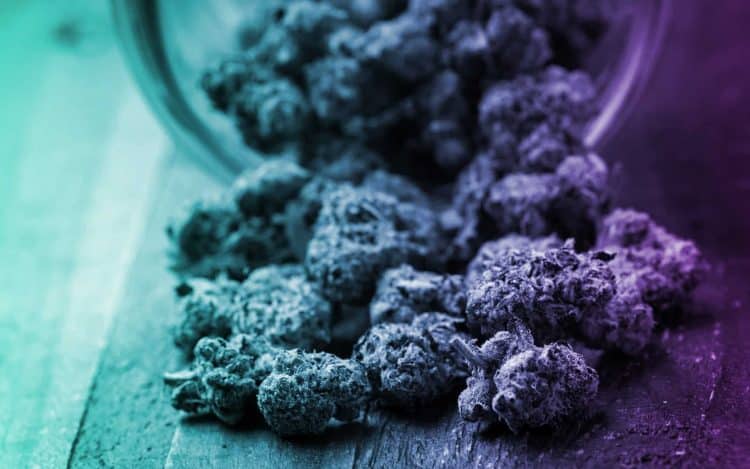
 Terpenes and Cannabinoids Working Together
Terpenes and Cannabinoids Working Together
